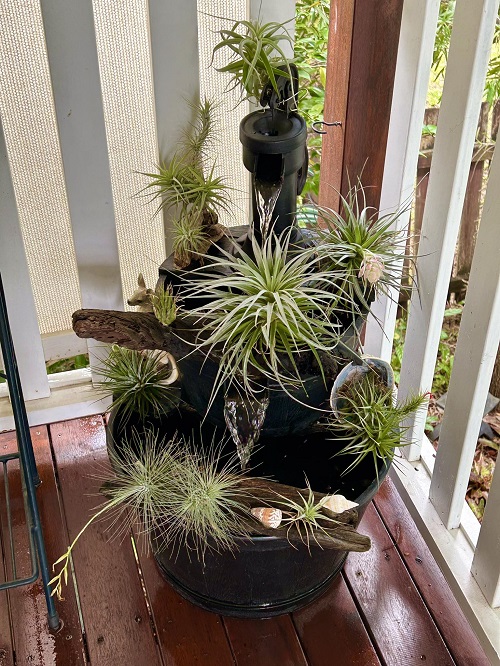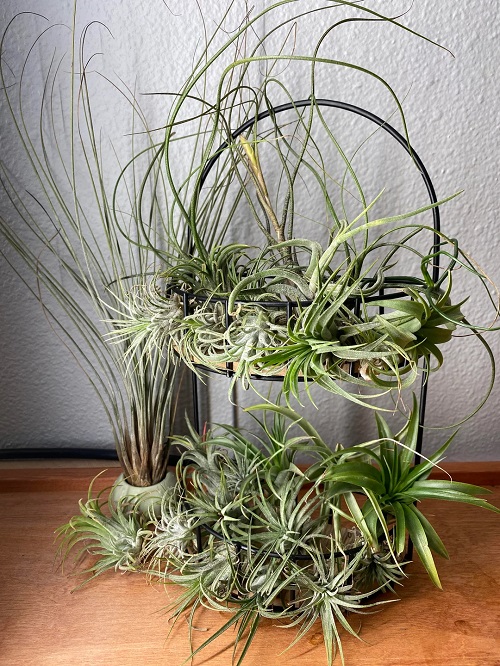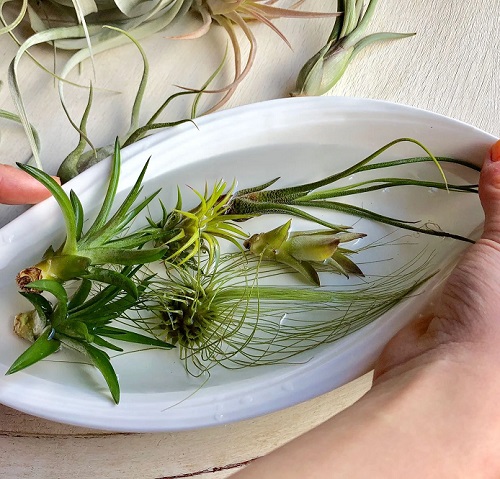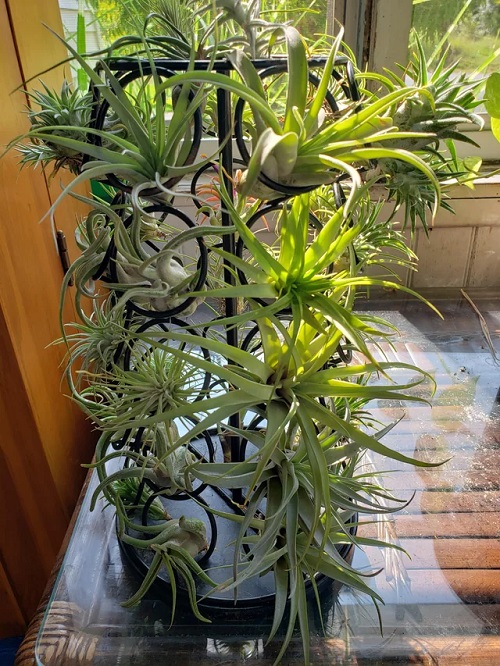Do your plants feel as soggy as the weather these days? Don’t worry, your Air Plants can still be happy during the monsoon!

Air plants (Tillandsias) are very low-maintenance, but when the rains arrive, their care routine needs a little change. Since they don’t grow in soil, they depend on air, light, and water balance and humidity can become a villain.
Here’s how to keep them thriving in monsoon or humid climates.
Tips for taking care of Air Plants in Monsoon or Humid Climates
Understand Monsoon and Humid Climate
Air plants love moisture in the air because their tiny cells (called trichomes) absorb it directly. But here’s the catch, too much dampness and poor airflow can lead to rot. It is a risky bet because great moisture also asks for great airflow.
Extra Tip: Instead of glass terrariums, try placing them on open shelves, driftwood, or wire holders. They’ll breathe better and stay healthier.
Watering
Even in moist climates, air plants still need occasional soaking or misting because they might dry slowly.
1. Soak
Once a week, submerge them in room-temperature water for 30 to 60 minutes and then shake off the excess water and let them dry upside down or sideways in a breezy spot.
2. Misting
If it is already very humid, mist 1-2 times a week but don’t skip soaking altogether because misting alone isn’t usually enough.
3. Monitor Dryness
Wrinkled leaves depict that the leaves are thirsty while soft and saggy leaves depict signs of over watering.
Airflow
After watering, let the plants dry for 4 hours. Good air circulation is mandatory in monsoon so avoid closed corners or sealed jars otherwise they’ll suffocate.
Lighting
They love bright, indirect flowering, so place them near a window with filtered daylight. If they are in a bathroom or kitchen, soft morning/evening light will work well. Just don’t let harsh midday rays burn them.
Temperature
They are comfortable between 15–30 °C (50–90 °F). Nights being a little cooler can help their growth. Monsoons offer warmth and humidity, but keep them away from from cold drafts or AC vents.
Fertilizing and Blooming
Not a must but if you want them to bloom, feed them a diluted air plant or bromeliad fertilizer once a month during the growing season.
Common Problems in Humid Climates
Rot and Fungus happens when there is too much water and no airflow. While there can be a pest infestation too due to high humidity that can bring mealybugs or scales. If you spot them then isolate the plant and rinse gently. After this, dab with a little diluted alcohol. Monsoon can either be your plants best friend or there worst enemy. Balance soaking with drying, give them light and airflow and they’ll grow healthy and happy. So, what is your rainy season routine for your air plants?




